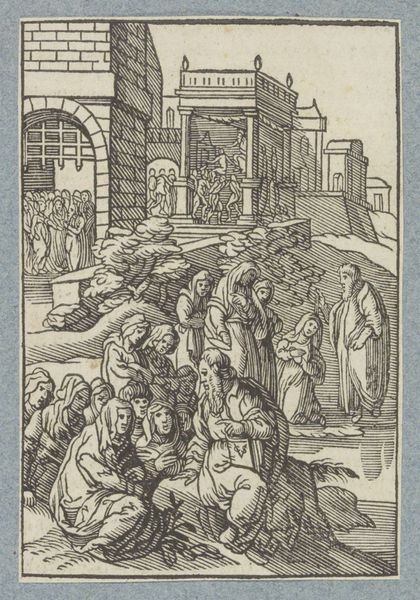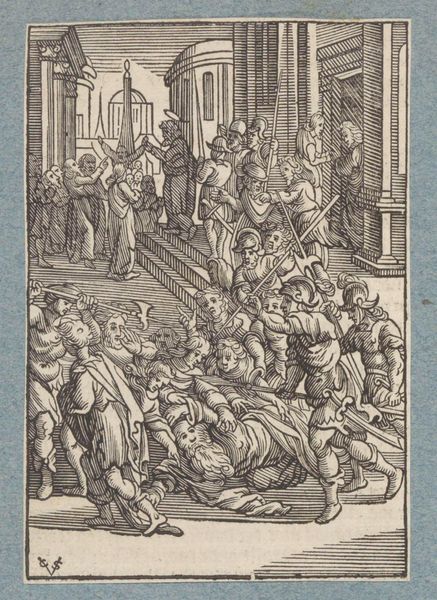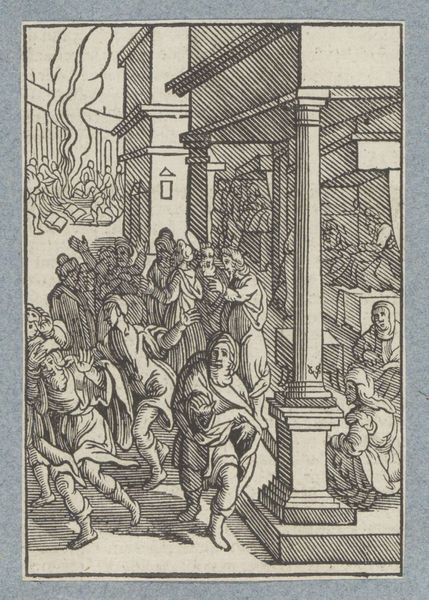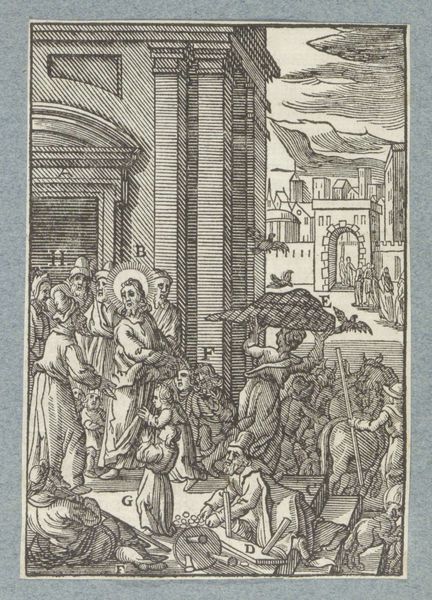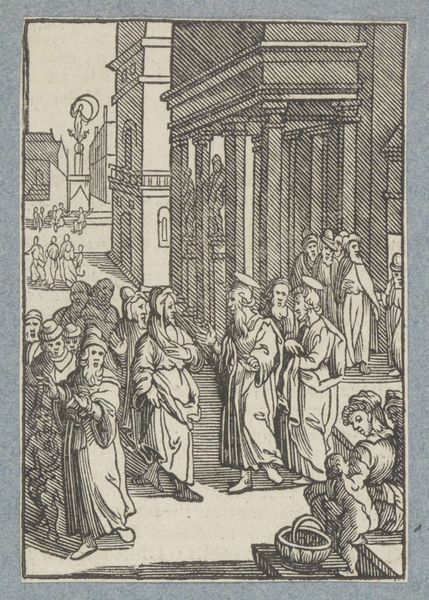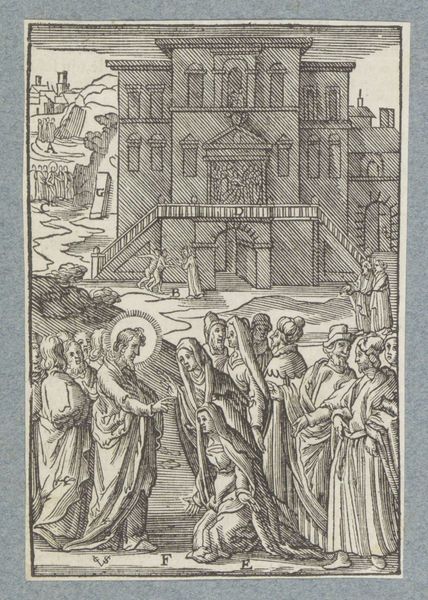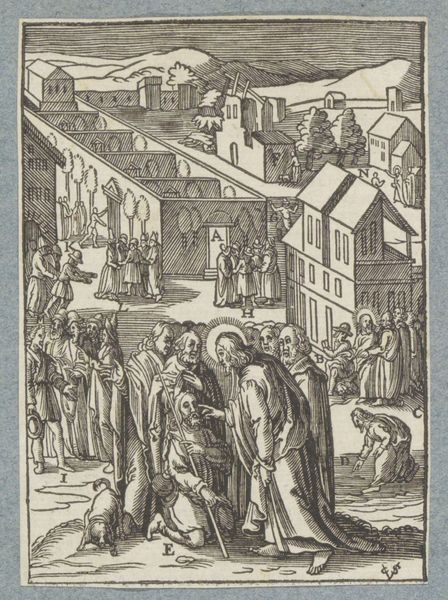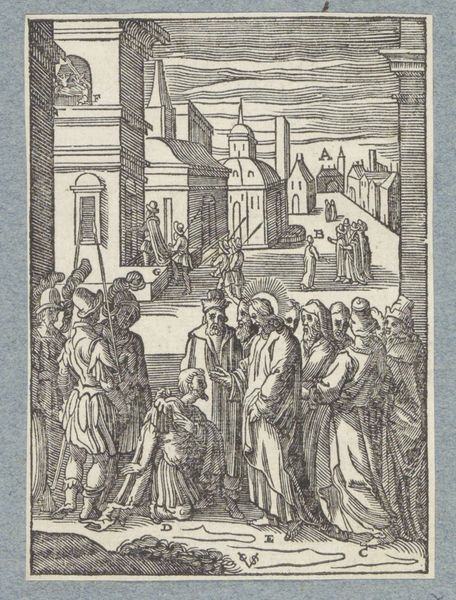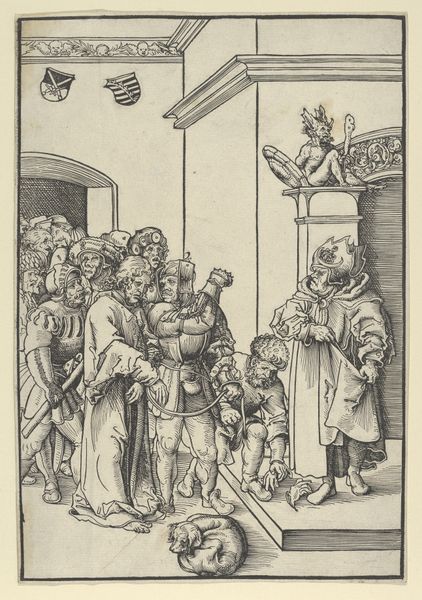
print, engraving
#
narrative-art
#
baroque
# print
#
figuration
#
history-painting
#
engraving
Dimensions: height 108 mm, width 75 mm
Copyright: Rijks Museum: Open Domain
Curator: This is a print titled "Paulus verkondigt de leer van Christus te Rome," or "Paul Preaching the Doctrine of Christ in Rome," made before 1646 by Christoffel van Sichem the Younger. It's currently held at the Rijksmuseum. Editor: Immediately, it evokes this feeling of intense purpose. Paul’s figure is so central, his posture really draws you in, right? Despite the small scale of the print, the city setting is really powerful too, suggesting both constraint and, oddly enough, limitlessness. Curator: The scene certainly conveys a sense of confinement and constraint with those Roman soldiers standing guard on the left, all those spears forming a rather oppressive boundary. Yet, against that visual pressure, you're right, there's this undeniable impression of spiritual expanse in his message. Editor: Right! And it's so clever how van Sichem juxtaposes that confined area, the immediate stage where Paul speaks, against the very back. Like a play within a play with that second audience observing behind. What is that exactly? Another speech? Another conversion? Curator: Intriguingly, it suggests not just a specific historical moment, but the ongoing, ever-expanding propagation of faith. Baroque art often aimed to stir religious emotions, but the architecture, clothing, everything reads so Roman, anchoring this print within a complex historical and political setting. You'll find the rigid rules of perspective breaking down though if you look carefully: this wasn’t exactly drawn to scale. Editor: A bold claim! Still, that doesn’t diminish the print’s impact. To me, Paul’s figure emerges not just as a preacher but as a quiet revolutionary, shifting the city's landscape with his teachings. Even those seemingly rigid buildings take on a less severe tone because his energy reverberates, suggesting their future will change! The architectural forms bend towards this man’s power! Curator: In the context of religious dissemination and image politics during that era, an artist's visual choices would shape their audience, their patrons. Here, it looks like the viewer has become yet another person onlooking, eager to understand Saint Paul's teachings, no? Editor: Indeed. It all contributes to a grand spectacle and I get the same feeling whether in my ear or with the artwork on the wall! Curator: Exactly! I see an expansive image, the figures both anchored to a moment and somehow also outside of time.
Comments
No comments
Be the first to comment and join the conversation on the ultimate creative platform.


